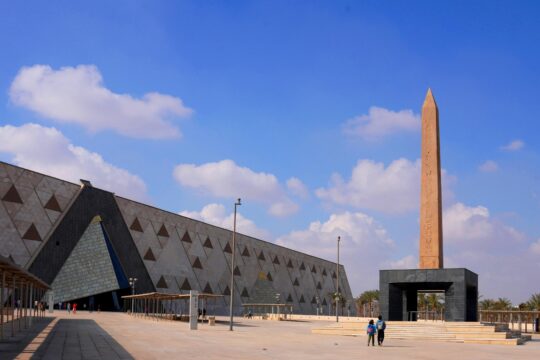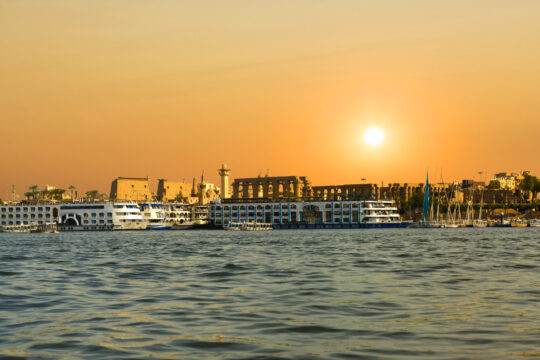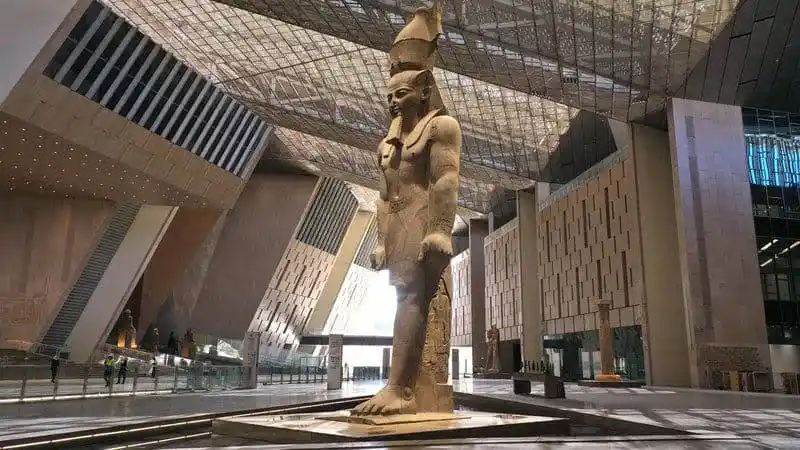
The Grand Egyptian Museum will open in 2023 after 20 years of labour and almost $1 billion. The final date of the opening is yet to be announced by the Egyptian government and it is expected to be one of the top events of the year.
Facts about the Grand Egyptian Museum (GEM)
- The most extensive museum in the world is devoted to a single culture, with an annual attendance of 5 to 6 million people and expected to be open in 2023.
- Both the protection and maintenance of Egypt’s cultural heritage and the development of the country’s tourist industry are bolstered by GEM’s efforts.
- Over one billion dollars were spent on the construction of the GEM complex, which covers 117 acres in Giza.
- The museum is home to 100,000 artefacts that date back to ancient Egypt.
- The GEM is the first sight in the world to have a hanging obelisk, and the grand staircase is filled with artefacts of tremendous significance.
The Grand Egyptian Museum was founded to house the treasures of ancient Egyptian artefacts and be the largest of its kind in the world. The old Egyptian museum in Cairo’s Tahrir Square, which had a long history of housing the treasures of ancient Egypt, was built due to its capacity limitations. Strategically, the new museum is situated just over a mile from the Sphinx and the Giza pyramids. Since the new structure is precisely aligned with the lines of the Pyramids, this location was chosen primarily to create harmony between the present and the past as well as to offer a unique experience for tourists and visitors who can access various sights within a short distance.
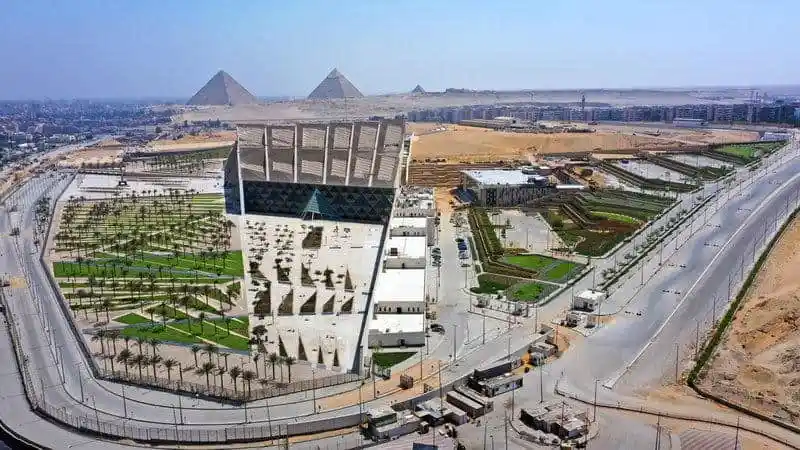
The GEM is planned to serve as a museum as well as a cultural and tourism complex. The structure will include boutiques, eateries, a meeting centre, and a movie theatre. The goal is to help revitalise Egyptian tourism, a crucial sector of the economy. Six million people a year are expected to visit the new museum, and they will be able to see the Giza pyramids as well with only one ticket.
Heneghan Peng, a Dublin-based architect firm, presented the winning offer in 2003 after a UNESCO-sponsored contest received over 1500 responses. Work got going immediately but was interrupted multiple times, most notably by the Covid-19 outbreak and the 2011 revolution.

The construction Timeline
- The design team submitted nearly 5,000 drawings to the Egyptian Ministry of Culture in late August 2008. The building tender was then launched in October 2008. Earthmoving has started to prepare the construction site.
- Tenders were due in September 2009, with a completion deadline of 2013. The construction has been interrupted due to political instability and the revolution in 2011.
- On January 11, 2012, a joint venture between Egypt’s Orascom Construction (OC) and the Belgian BESIX was granted the $810 million contract for phase three of the Grand Egyptian Museum (GEM).
- Besix and Orascom hauled in and placed an 82-ton, 3,200-year-old statue of Ramses II at the Grand Egyptian Museum in January 2018. Due to its enormity, it was the first artefact to be displayed in the Museum during its building.
- On April 29, 2018, a fire broke out at the GEM’s entrance, although no artefacts were harmed, and the origin of the fire remained unclear.
- The final of King Tutankhamun’s chariots were transported to GEM in May 2018.
- According to Tarek Tawfik, GEM’s director, the estimate for a complete opening was pushed back to the fourth quarter of 2020 in November 2018.
- The museum’s intended opening date was put back to 2021 in April 2020 because of the COVID-19 epidemic.
- There have been more delays, and no official opening date has been set. Prior to its formal inauguration, the GEM is open for private visits.
The building will soon be delivered by the Egyptian authorities. The final cost is expected to be around twice the original budget. It has been built to reflect the magnificent ancient civilization, making it a monument that even the pharaohs would be proud of.
The Design of the Grand Egyptian Museum
The magnificent alabaster structure spreads out behind the pyramids, a half-hour drive from the city’s centre. The structure itself blends with the desolate setting. The exterior, which is three floors high, is embellished with Egyptian-inspired pyramidal patterns.
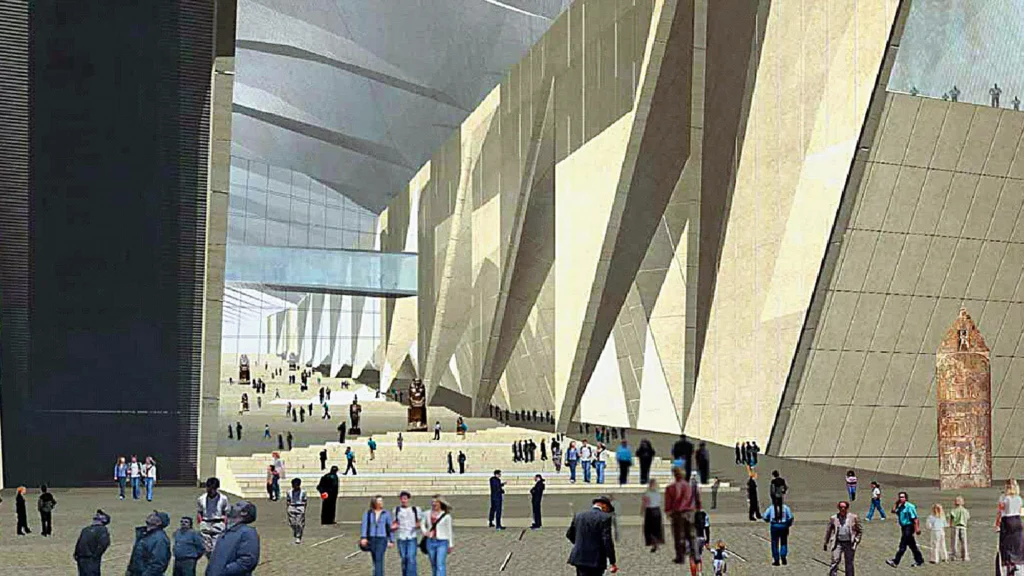
West 8 was involved in the landscaping design and master plan for the entire site, while German firm Atelier Brueckner was appointed to design the Tutankhamun galleries, Grand Stairs, Piazza Atrium, and the Children’s Museum. The Irish firm has worked alongside BuroHappold Engineering and Arup for the engineering work. West 8 was involved in the landscaping design and master plan for the entire site.
There will be 24,000 m2 of display area within the museum, which is equivalent to six football fields. The vast collection of artefacts hosts some ancient Egyptian gems that have never been viewed by the general public. A 12 m tall statue of King Ramses II welcomes tourists as soon as they approach the museum. If you look up, you’ll see the grand staircase that ascends to a massive glass lobby and is flanked by 60 sculptures. The three Giza pyramids are seen from there in an unrivalled panorama.
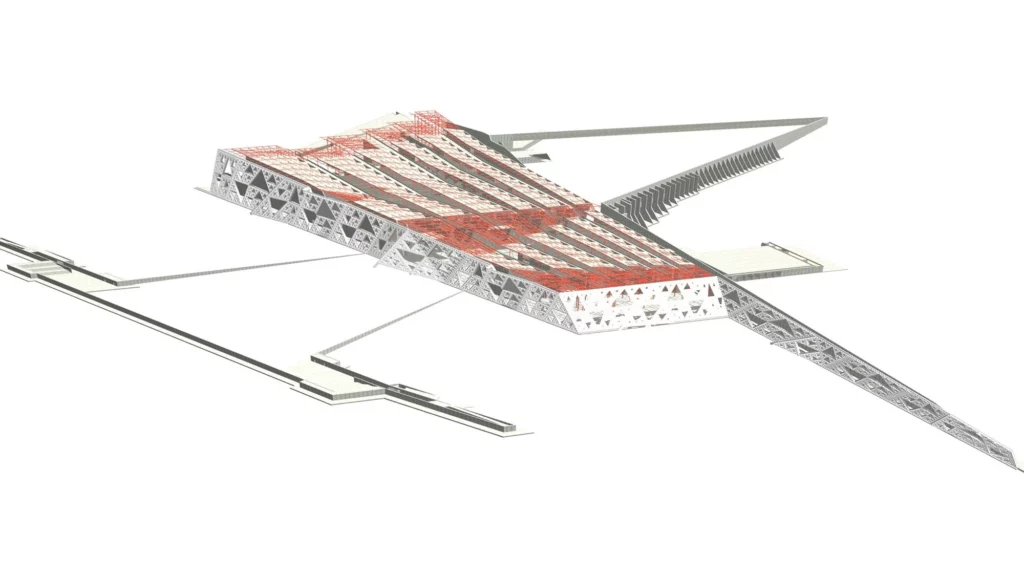
Because of the level difference between the plateau and the surrounding plain, the layout and placement of the museum added a new ‘edge’ to the terrain. This new edge is defined by a large transparent stone front that alters its appearance depending on the time of day. The structure of the design was determined by a series of visual axes that extended from the site towards the three pyramids that were located in the surrounding area.
The architectural company aimed to convey the museum’s distinctive topography to visitors and provide them with “layered” experiences as they walked around the building, which was the overarching goal of the museum’s basic design concept. Therefore, while entering the museum, each visitor makes their way via a magnificent court, which is followed by a covered entry area and a grand staircase that leads up to the plateau level, which is where all of the galleries are situated. When visitors reach that plateau level, they will be able to look out from within the museum and view the pyramids.
The Largest Egyptology Museum in the World
What does the Grand Egyptian Museum contain?
The museum’s collection has approximately 100,000 artefacts, which are presented in 12 exhibition rooms covering 484,000 square feet of floor area. Around 18,000 unique antiquities collections (including almost 5000 in the Tutankhamun galleries and over 13,000 in the other galleries).
- Tutankhamun’s burial collection includes the golden funerary mask, which is perhaps the most iconic Egyptian artefact and one of the world’s most valuable works of art. The 5000 pieces of Tutankhamun’s wealth, which Howard Carter initially discovered in the Valley of the Kings in Luxor in November 1922, are expected to draw crowds of visitors from all over the globe to the museum. All the riches of the young king, undiscovered for three thousand years, will be on display behind the exhibition cases of the large gallery. These treasures include golden masks, sarcophagi, golden beds and chariots, and mother-of-pearl jewellery inlaid with precious stones.
- Khufu’s solar boat, the wooden ship discovered near Giza’s pyramids. The renowned solar barque belonged to the pharaoh Khufu and was intended to transport souls to the great beyond, is one of the GEM’s crown treasures. It is the largest wooden vessel in the world, measuring 42 m in length, 20 tonnes in weight, and 4600 years old which has been found in 1954.
- The famous statue of Ramses II, one of the greatest monuments formerly stood near Cairo’s Ramses Train Station will be standing at the entrance of the GEM.
The Grand Egyptian Museum will include permanent displays for half of its items. The other half will be preserved in storage and repaired and examined there at a sizable research centre with 17 enormous, state-of-the-art restoration labs.
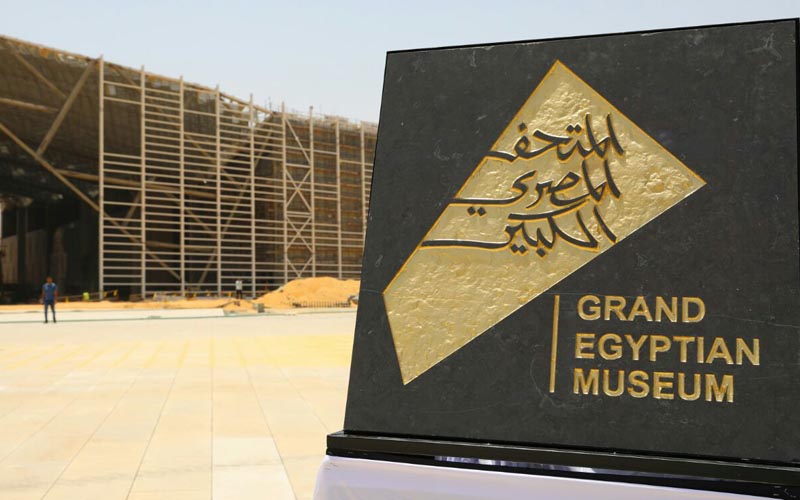
Location and Transportation
Cairo International Airport is the closest airport which is almost 1 and half-hour journey from the location. There are also plans to expand to nearby Sphinx International Airport which is a half hour away from the museum and the Pyramids of Giza. This location is ideal for tourists who want to book a one or two days Cairo tour and gain the most from a short visit to Egypt.
The precise day on which the Grand Egyptian Museum will welcome visitors is all that is left to be determined. Numerous dates have been speculated about but not proven. The start of the opening ceremonies is expected to be magnificent.
What other activities in you can do If you visit the Grand Egyptian Museum?
There are several things you can enjoy while you visit the museum including visiting the Great Pyramids, the Sphinx, and the Pyramids of Saqqara day tour. You can also enjoy a safari trip to the nearby dunes of Fayyoum Oasis and have a sandboarding experience. Additionally, you can book a Skydiving over the Pyramids or Paragliding experience which is considered one of the most unique activities in Egypt.
Is it possible to visit the Grand Egyptian Museum?
The Grand Egyptian Museum is currently open for private visits and expected to be open in 2023. The opening ceremony is currently planned and expected to host the world’s leaders and public figures.
How much does it cost to visit the Grand Egyptian Museum?
The ticket costs are not realised yet and there will be one ticket to visit the GEM, the Pyramids of Giza and the Sphinx. There is also information from officials that the tickets will vary depending on the number of days as well as there will be discounts for students and people with special needs. There will be different admission tickets for guided tours and virtual reality.
Has the Great Egyptian Museum opened?
The museum will be open in 2023 after the finishing of the displays and technical setups. There are special visits and events hosted by the museum recently.

